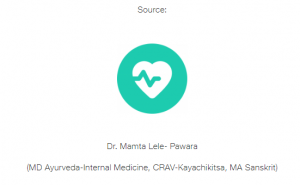Nipah virus (NiV) is a deadly zoonotic virus that has garnered significant attention due to its potential for outbreaks with high mortality rates. First identified in Malaysia in 1998, Nipah virus has since caused sporadic outbreaks in South and Southeast Asia. Recent outbreak in Kerala’s Kozhikode district has grabbed media attention again on Nipah virus.
Understanding the signs, symptoms, and treatment options for Nipah virus is essential for preventing its spread and mitigating its impact on public health.
The Basics of Nipah Virus
Nipah virus belongs to the family Paramyxoviridae and the genus Henipavirus. It is primarily transmitted from animals to humans, with fruit bats being the natural reservoir hosts. Infection can occur through direct contact with infected animals or consumption of contaminated food products, especially fruits that have been partially eaten by infected bats.
Signs and Symptoms
The incubation period for Nipah virus can range from 4 to 14 days (about 2 weeks) after exposure. The symptoms can vary in severity, but they generally fall into three categories: mild, severe, and fatal encephalitis.
Mild Symptoms:
- Fever
- Headache
- Muscle pain
- Fatigue
- Respiratory symptoms (cough, sore throat)
Severe Symptoms:
- Severe headache
- Disorientation
- Drowsiness
- Confusion
- Difficulty in swallowing
- Altered consciousness
Fatal Encephalitis:
- Coma
- Seizures
- Respiratory distress
- Neurological signs
- Diagnosis
Early diagnosis of Nipah virus is crucial for patient management and outbreak control. Diagnostic methods include:
- PCR (Polymerase Chain Reaction) to detect viral RNA
- Serological tests to detect antibodies
- Virus isolation from clinical specimens
- Immunohistochemistry on tissue samples
- Treatment
There is currently no specific antiviral treatment for Nipah virus infection. Supportive care remains the mainstay of treatment, focusing on relieving symptoms and maintaining vital organ functions. The following measures are important for managing Nipah virus patients:
- Isolation: Infected individuals should be isolated to prevent further transmission to healthcare workers and close contacts.
- Symptomatic Treatment: This includes medications to reduce fever, alleviate pain, and manage respiratory distress.
- Intensive Care: Severe cases may require mechanical ventilation and other critical care measures.
- Experimental Therapies: In recent years, some experimental treatments, such as monoclonal antibodies and antiviral drugs, have shown promise in animal models. However, more research is needed to establish their efficacy in humans.
-
Prevention and Control
Preventing Nipah virus outbreaks primarily involves public health measures and education. Key strategies include:
- Avoiding Direct Contact: People should avoid contact with sick animals, especially pigs and bats. Personal protective equipment should be used when handling potentially infected animals.
- Safe Food Practices: Properly cooking and handling fruits, especially those partially eaten by bats, can reduce the risk of infection.
- Quarantine Measures: Implementing quarantine measures for individuals who have been in contact with confirmed cases can help prevent further spread.
- Vaccination: Efforts are ongoing to develop a Nipah virus vaccine, but no widely available vaccine is currently available.
Conclusion
Nipah virus is a deadly zoonotic disease with the potential to cause severe outbreaks. Understanding its signs, symptoms, and treatment options is essential for healthcare professionals and the general public. While there is no specific antiviral treatment, early diagnosis, supportive care, and prevention measures are key to reducing the impact of Nipah virus on public health. Collaboration between healthcare organizations, researchers, and governments is crucial in combating this emerging infectious disease.

